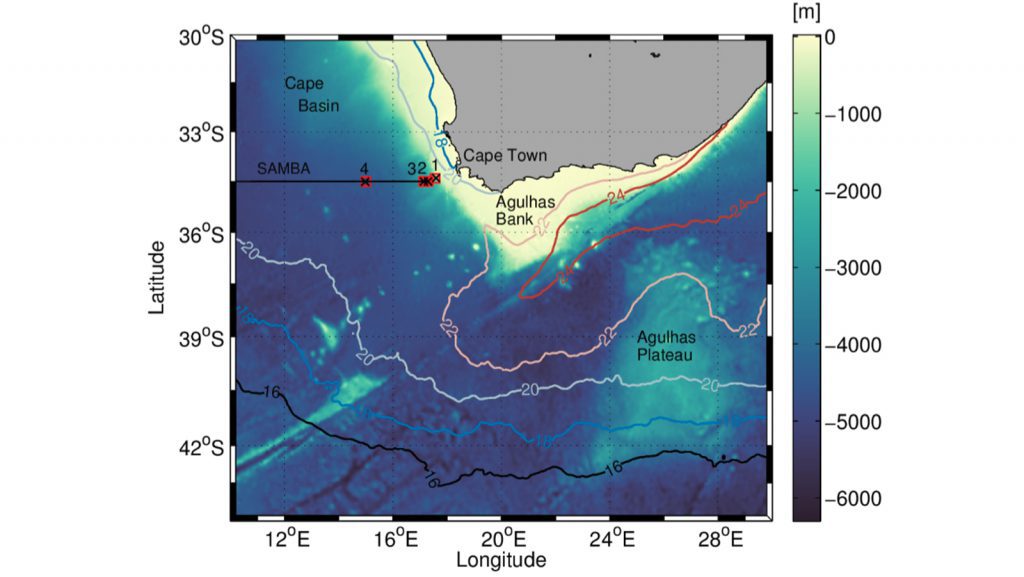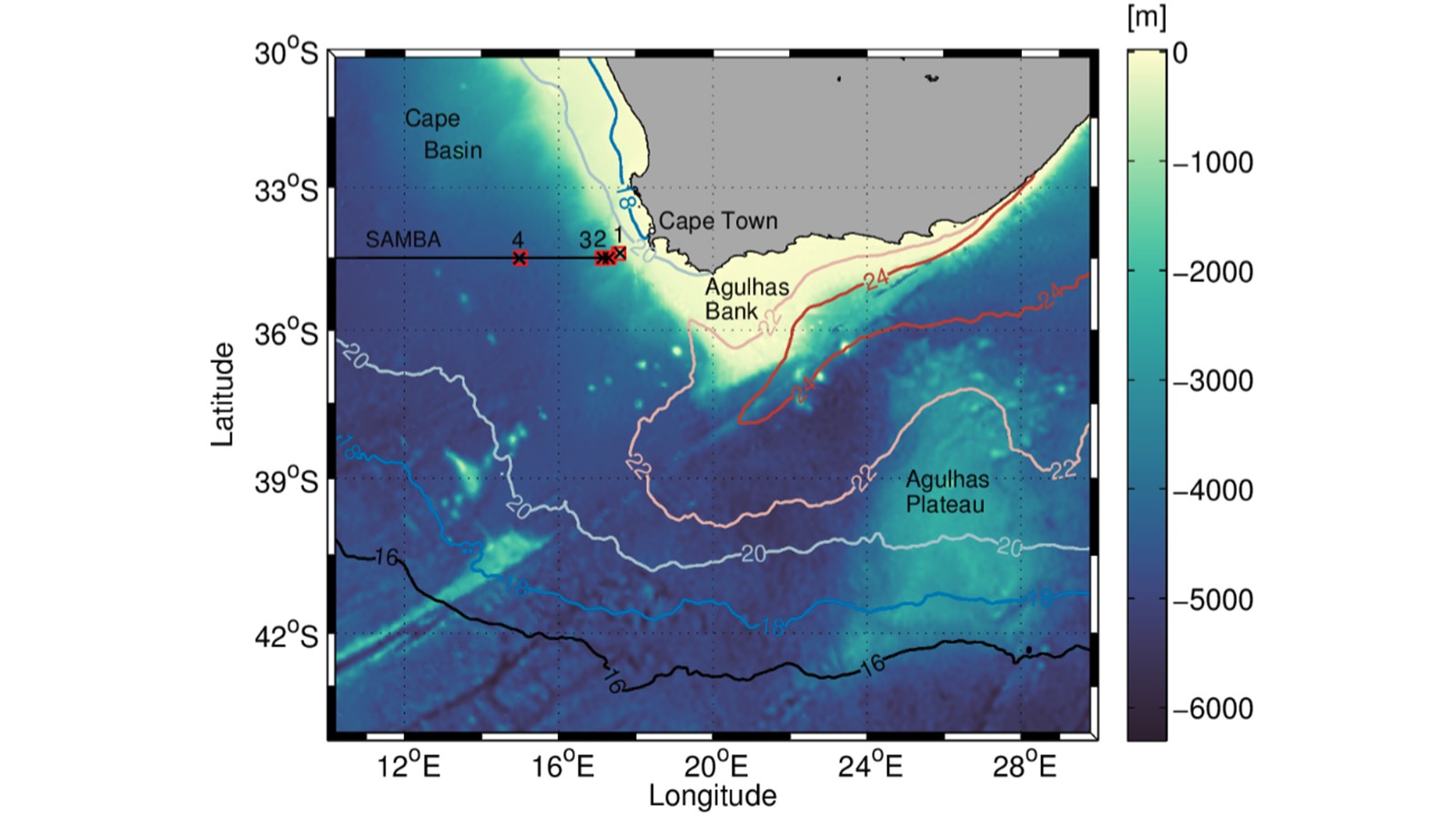
In a recent article published in the journal “Ocean Science”, Marion Kersale (CIMAS, PhOD) collaborated with scientists from South Africa and France to explore the buoyancy and velocity changes due to eddies, dipoles, and current filaments in the Cape Basin using two observational systems that are part of the South Atlantic Meridional overturning circulation Basin-wide Array (SAMBA) at 34.5°S.
The eastern boundary currents at 34.5°S play an important role in the transport of water, heat, and salt by the global Meridional Overturning Circulation, and as a result variations in these currents have important impacts on sea level, precipitation patterns, and extreme weather in the region and around the globe. Data collected by full-depth-moorings and by Current and Pressure recording Inverted Echo Sounders (CPIES) captured daily eastern boundary buoyancy changes associated with migrating eddies and current filaments. This study demonstrates that water mass exchange in the Cape Basin happens primarily through advection by mesoscale eddies and also via broad water mass intrusions brought about by the existence of intense dipoles. These complex dynamics induce strong upper-ocean velocity variations and cross-shelf exchanges, which can have crucial implications for biological productivity in the area as water exported offshore is generally rich in nutrients. The study also highlights the need to continuously sample the full water column, as inter-basin exchanges occur intermittently and can affect the buoyancy and currents at multiple depths.
